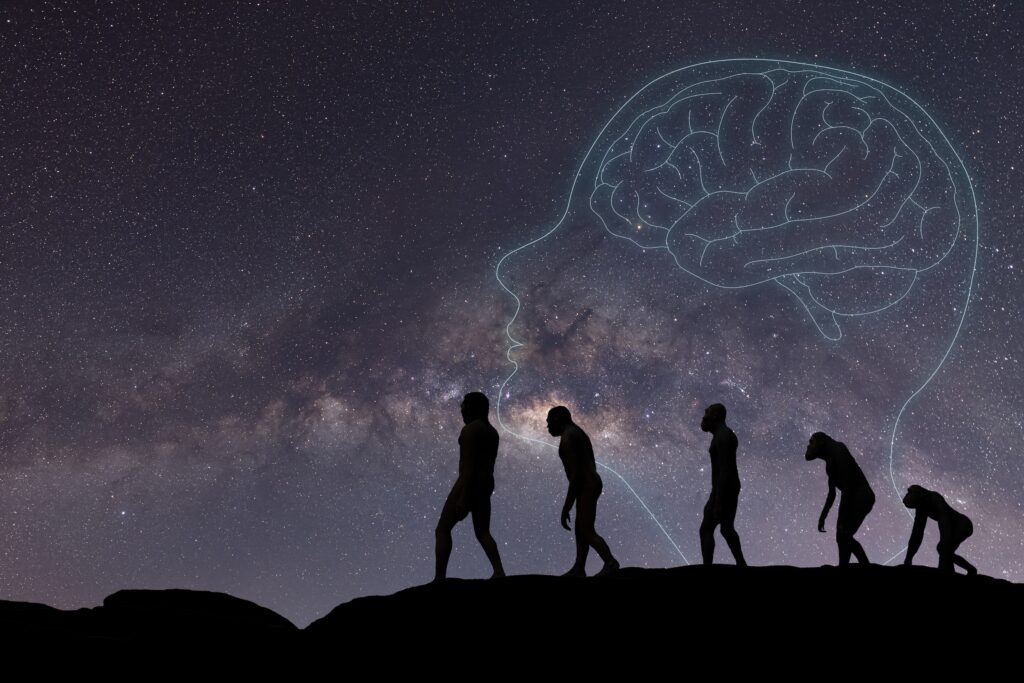Near-Death Experiences during cardiac arrest
Reading | Medicine
![]() dr. Pim van Lommel | 2021-04-20
dr. Pim van Lommel | 2021-04-20

In this short and powerful essay, cardiologist Dr. Pim van Lommel summarizes and discusses four rigorous studies of Near-Death Experiences (NDEs) carried out in clinical settings. He concludes that, on a scientific basis, the materialist notion that brain activity somehow is or generates consciousness is not adequate to accommodate and make sense of the empirical evidence available.
The scientific study of near-death experiences (NDEs) pushes us to the limits of our medical and neurophysiological ideas about the range of human consciousness and the mind-brain relationship. Direct evidence of how neurons or neuronal networks could possibly produce the subjective essence of the mind is currently lacking. Despite our modern neuroimaging techniques like EEG, fMRI, and PET-scan, we cannot measure nor scientifically and objectively prove what we think or feel: we just measure changing neural activation (neural correlates). In four recently published prospective studies on NDEs in survivors of cardiac arrest (van Lommel et al., 2001; Greyson, 2003; Parnia et al., 2001; Sartori, 2006), between 10 and 20% of the 562 included patients reported an experience of enhanced consciousness during the period of unconsciousness, during clinical death, during a transient functional loss of the cortex and the brainstem. But how could a clear consciousness outside one’s body be experienced at the moment that the brain no longer functions during clinical death? A clear sensorium and complex perceptual processes during such a period of impaired cerebral perfusion challenges the concept that consciousness is localized exclusively in the brain. Complex experiences such as those reported during NDEs should not arise in the first place, nor be retained in memory. Scientific research on NDEs during cardiac arrest questions the purely materialistic paradigm in science.
What Is an NDE?
A near-death experience is a form of non-ordinary mental expression and can be defined as the reported memory of a range of impressions during a special state of consciousness, including a number of special and universal reported elements such as an out-of-body experience, pleasant feelings, seeing a tunnel, a light, deceased relatives, a life review, and a conscious return into the body. Many circumstances are described during which NDEs are reported, such as cardiac arrest (clinical death), shock after loss of blood (complicated childbirth), coma caused by traumatic brain injury or stroke, near-drowning (mostly children) or asphyxia, but NDE-like experiences are also reported in serious diseases that are not immediately life-threatening, during isolation, depression, or meditation, or without any obvious reason. The NDE is usually transformational, causing enhanced intuitive sensitivity, profound changes of life-insight, and the loss of fear of death. The content of an NDE and the effects on patients seem similar worldwide, across all cultures and all times. NDEs occur with increasing frequency because of improved survival rates resulting from modern techniques of resuscitation, and from better therapies for patients with cerebral trauma. According to a recent random poll in the US and in Germany, about 4% of the total population in the western world has experienced an NDE (Gallup & Proctor, 1982). Thus, about 9 million people in the US, and about 20 million people in Europe should have had this extraordinary conscious experience. For most scientists the phenomenon of near-death experience raises a number of fundamental questions, like how and why does an NDE occur? Or how does the content of an NDE come about? And why does a person’s life change so radically after an NDE? After all, according to current medical knowledge it is impossible to experience consciousness during cardiac arrest or deep coma.
Four Recent Prospective Studies on NDEs
Until quite recently there was no prospective and scientifically designed study to explain the cause and content of an NDE. Professionally designed prospective studies in survivors of cardiac arrest are necessary in order to obtain more reliable data to corroborate or refute the existing theories on the cause and content of NDEs. We need to know if there could be a physiological, pharmacological, psychological or demographic explanation for why people experience enhanced consciousness during a period of cardiac arrest. In the four recently published prospective studies on NDEs in survivors of cardiac arrest, with identical study design, between 10 and 20% of the 562 included patients reported an experience of enhanced consciousness during the period of seeming unconsciousness, during clinical death, during a transient functional loss of the cortex and the brainstem. Clinical death is defined as the period of seeming unconsciousness caused by a total lack of oxygen in the brain (anoxia) because of the arrest of circulation and breathing, as caused by cardiac arrest in patients with an acute myocardial infarction. If in this situation no resuscitation is initiated within five to ten minutes, the brain cells will be irreversibly damaged, and the patient will always die.
The Dutch prospective study on NDEs in survivors of cardiac arrest
In 1988 a prospective study was initiated in the Netherlands, and it was published in The Lancet in December 2001 (van Lommel et al., 2001). At that point, no large-scale prospective study into NDEs had been undertaken anywhere in the world. Our study aimed to include all consecutive patients who had survived a cardiac arrest in one of the ten participating Dutch hospitals. All these patients were in the first stage of the process of dying and would have died if resuscitation had not been initiated. This kind of design also creates a control group of patients who have survived a cardiac arrest but who have no recollection of the period of seeming unconsciousness. In a prospective study, such patients are asked, within a few days of their resuscitation, whether they have any recollection of the period of their cardiac arrest, i.e., of the period of their seeming unconsciousness.
We found that 282 patients (82%) had no recollection of the period of cardiac arrest, of their period of seeming unconsciousness. However, 62 patients (18%) reported some recollection of the time of clinical death. Of these patients 41 patients (12%) had a core experience with a score of 6 or higher, and 6% had a superficial NDE. And all well-known elements were reported, like awareness of being dead, positive emotions, an out-of-body experience, moving through a tunnel, communication with ‘the light,’ an observation of colors or of a celestial landscape, a meeting with deceased relatives, a life review and the experience of a border. The more elements were reported, the deeper the experience was. What might distinguish the small percentage of patients who report an NDE from those who do not? We found to our surprise that neither the duration of cardiac arrest (2 minutes or 8 minutes) nor the duration of seeming unconsciousness (5 minutes or three weeks in coma), nor the need for intubation in complicated CPR, nor a short induced cardiac arrest in electrophysiological stimulation (EPS) had any influence on the frequency of NDE. So, the degree or gravity of the lack of oxygen in the brain (anoxia) appeared to be irrelevant, and a physiological explanation for NDE like anoxia could be excluded in our study. Neither could we find any relationship between the frequency of NDE and administered drugs, fear of death before the arrest, nor foreknowledge of NDE, gender, religion, or education.
We additionally performed a longitudinal study with taped interviews 2 and 8 years following the cardiac arrest of all late survivors with NDE, along with a matched control group of survivors of cardiac arrest who did not report an NDE. This study was designed to assess whether the loss of fear of death, the transformation in attitude toward life and the enhanced intuitive sensitivity is the result of having an NDE or just the result of the cardiac arrest itself. This had never been studied before in a prospective design. The NDE turned out to be a life changing experience because only patients with an NDE did show this typical transformation. They were less afraid of death and had a stronger belief in an afterlife. We saw in them a greater interest in spirituality and questions about the purpose of life, as well as a greater acceptance of and love for oneself in combination with a feeling of oneness with others, and with nature. The conversations we had in our longitudinal study revealed that people, often to their own amazement and confusion, had acquired enhanced intuitive feelings after an NDE. Finally, it is quite remarkable and a surprising and unexpected finding to see a cardiac arrest lasting just a few minutes give rise to such a lifelong process of transformation. However, the integration and acceptance of an NDE is a process that may take many years because of its far-reaching impact on people’s pre-NDE understanding of life and value system. Despite the mostly positive experience the NDE is also a traumatic event because there is hardly any acceptance by doctors, nurses, family and partner (with a divorce rate of more than 70%), which makes the process of acceptance and integration exceedingly difficult, and this process will take many, many years, with strong feelings of depression, homesickness, and loneliness, but the longer interval between NDE and interview, the more positive changes are usually reported.
The other 3 prospective studies on NDE
Bruce Greyson, who published a prospective study in 116 survivors of cardiac arrest in the USA (Greyson, 2003), found that 15.5% of the patients reported an NDE: 9.5% reported a core NDE, and 6% a superficial NDE with a score of less than 6. He writes that “no one physiological or psychological model by itself could explain all the common features of an NDE. The paradoxical occurrence of a heightened, lucid awareness and logical thought processes during a period of impaired cerebral perfusion raises perplexing questions for our current understanding of consciousness and its relation to brain function. A clear sensorium and complex perceptual processes during a period of apparent clinical death challenge the concept that consciousness is localized exclusively in the brain”. Sam Parnia (Parnia et al., 2001) included 63 patients who survived their cardiac arrest. He found in his study that 11% reported an NDE: 6.3% reported a core NDE, and 4.8% a superficial NDE with a score of less than 6. He writes that the NDE reports with veridical perceptions during cardiopulmonary resuscitation (CPR) suggest that the NDE occurs during the period of seeming unconsciousness. This is a surprising conclusion, in his view, because when the brain is so dysfunctional that the patient is deeply comatose, those cerebral structures that underpin subjective experience and memory must be severely impaired. Complex experiences as reported in the NDE should not arise or be retained in memory. Such patients would be expected to have no subjective experience, as was the case in most patients who survive cardiac arrest, since all centers in the brain that are ostensibly responsible for generating conscious experiences have stopped functioning because of the lack of oxygen. And over a period of four years, Penny Sartori (2006) carried out a smaller study into NDEs in 39 survivors of cardiac arrest in the UK. She found that 23% reported an NDE: 18% reported a core NDE, and 5% a superficial NDE with a score of less than 6. She concludes that “according to mainstream science, it is quite impossible to find a scientific explanation for the NDE as long as we ‘believe’ that consciousness is only a side effect of a functioning brain.” The fact that people report lucid experiences in their consciousness when brain activity has ceased is, in her view, “difficult to reconcile with current medical opinion.”
Neurophysiology in Cardiac Arrest
All elements of an NDE are experienced during the period of cardiac arrest—that is, during apparent unconsciousness—and clinical death. But how is it possible to explain these experiences during temporary loss of all functions of the brain due to acute lack of oxygen in the cortex and the brainstem (pan-cerebral anoxia)? We know that patients with cardiac arrest are at least seemingly unconscious within seconds. Through many studies with induced cardiac arrest in both human and animal models, cerebral function has been shown to be severely compromised during cardiac arrest: there is complete cessation of cerebral blood flow immediately following ventricular fibrillation (Gopalan et al., 1999); clinical findings point to sudden loss of all body reflexes, caused by the loss of function of the cortex and abolition of brain-stem activity (all brainstem reflexes); there is loss of the gag reflex, of the corneal reflex, as well as fixed and dilated pupils (van Lommel, 2010). And the function of the respiratory center, located close to the brainstem, fails, resulting in apnea (no breathing). Total loss of oxygen supply (anoxia) causes a functional loss of all cell systems and organs in the body. In anoxia that lasts for only some minutes (transient anoxia) this loss may be temporary, but in prolonged anoxia cell death occurs with permanent functional loss. Several studies have shown that external heart massage during CPR cannot pump enough blood to the brain to restore brain function, but it may be sufficient to keep brain tissue viable for a short time. It always requires defibrillation to reestablish the cardiac rhythm and to restore waking consciousness.
A Flat Line EEG During Cardiac Arrest
But how do we know for sure that the electroencephalogram (EEG)—the registration of the electrical activity of the cortex—has become flat in those patients with cardiac arrest, and how can we study this? In normal circumstances no attempts are made to register an EEG during cardiac arrest, because this takes far too much time, and patients need to be successfully resuscitated and defibrillated as soon as possible. But there have been some reports in which the electrical activity of the brain was measured during cardiac arrest, for example during surgery, or during threshold testing in ICD-implantation. Following the cardiac arrest (‘no flow’), the EEG flat-lined after an average of 15 seconds and remained flat despite external resuscitation (‘low flow’) (Moss & Rockoff, 1980; Losasso et al., 1992). The EEG remains flat during the cardiac arrest until cardiac output has been restored by defibrillation (Marshall et al., 2001). It seems rational to assume that all 562 survivors of cardiac arrest in the four prospective studies on NDEs should have had a flat-line EEG, because no patient had ever been successfully resuscitated within 20 seconds (van Lommel, 2010).
Conclusions
Based on prospective studies on NDE and recent findings in neurophysiological research, and in analogy with concepts from quantum physics, our consciousness cannot be localized in a certain time or space. This is called nonlocal consciousness, because almost all reported aspects of consciousness during cardiac arrest seem to be quantum-like phenomena, such as non-local interconnectedness, beyond time and space (van Lommel, 2013). In this concept our endless or nonlocal consciousness with declarative memories finds its origin, and is stored, in a nonlocal realm as wave-fields of information, and the brain only serves as a relay station for parts of these wave-fields of consciousness to be received into, or as, our waking consciousness. The function of the brain should so be compared with a transceiver, a transmitter/receiver, or interface, exactly like the function of a computer. Different neuronal networks function as interface for different aspects of our consciousness, and the function of neuronal networks should be regarded as receivers and conveyors, not as retainers of consciousness and memories. In this concept, nonlocal consciousness is not rooted in the measurable domain of physics, our manifest world. With this concept of nonlocal consciousness all reported elements of an NDE during cardiac arrest could be explained.
Since the publication of the aforementioned four prospective studies, which have strikingly similar results and conclusions, the phenomenon of the NDE can no longer be scientifically ignored. According to these empirical studies, as well as neurophysiological studies in cardiac arrest, the current materialist view of the relationship between the brain and consciousness held by most physicians, philosophers and psychologists seems too restricted. By making a scientific case for consciousness as a nonlocal and thus ubiquitous phenomenon, we can contribute to new ideas about the relationship between consciousness and the brain. There are now good reasons to assume that our consciousness does not always coincide with the functioning of our brain: enhanced consciousness can apparently be experienced with the possibility of perception out and above the lifeless body. Studies on NDEs seem to suggest that our consciousness does not resides in our brain and is not limited to our brain, because our consciousness has nonlocal properties. According to this hypothesis, our brain seems to have a facilitating function and not a producing function when it comes to consciousness. It seems inevitable that we need new ways of thinking to study consciousness and to reconsider the relationship between consciousness and the brain. We need a so-called postmaterialist science to include all subjective and transpersonal aspects that may occur in our consciousness, and to reconsider our currently widely accepted ideas about the mind-brain relationship.
References
Gallup, G., & Proctor, W. (1982). Adventures in Immortality: A Look Beyond the Threshold of Death. New York: McGraw-Hill.
Gopalan, K. T., Lee, J., Ikeda, S., & Burch, C. M. (1999). Cerebral blood flow velocity during repeatedly induced ventricular fibrillation. J Clin Anesth, 11(4), 290-295.
Greyson, B. (2003). Incidence and correlates of near-death experiences in a cardiac care unit. General Hospital Psychiatry, 25, 269-276.
Losasso, T. J., Muzzi, D. A., Meyer, F. B., & Sharbrough, F. W. (1992). Electroencephalographic monitoring of cerebral function during asystole and successful cardiopulmonary resuscitation. Anesth Analg, 75, 12-19.
Moss, J., & Rockoff , M. (1980). EEG monitoring during cardiac arrest and resuscitation. JAMA, 244(24), 2750-1.
Parnia, S., Waller, D. G., Yeates, R., & Fenwick, P. (2001). A qualitative and quantitative study of the incidence, features and aetiology of near death experience in cardiac arrest survivors. Resuscitation, 48, 149-156.
Sartori, P. (2006). The Incidence and Phenomenology of Near-Death Experiences. Network Review (Scientific and Medical Network), 90, 23-25.
van Lommel, P., Van Wees, R., Meyers, V., & Elfferich, I. (2001). Near-death experiences in survivors of cardiac arrest: A prospective study in the Netherlands. Lancet, 358, 2039-2045.
van Lommel, P. (2010). Consciousness Beyond Life. The Science of the Near-Death Experience. New York: Harper Collins. Translation from: Van Lommel, P. (2007). Eindeloos Bewustzijn. Een wetenschappelijke visie op de bijna-dood ervaring. Kampen, Ten Have.
van Lommel, P. (2013). Nonlocal Consciousness. A concept based on scientific research on near-death experiences during cardiac arrest. Journal of Consciousness Studies, 20, 7-48.

Essentia Foundation communicates, in an accessible but rigorous manner, the latest results in science and philosophy that point to the mental nature of reality. We are committed to strict, academic-level curation of the material we publish.
Recently published
Reading
Essays
Seeing
Videos
Let us build the future of our culture together
Essentia Foundation is a registered non-profit committed to making its content as accessible as possible. Therefore, we depend on contributions from people like you to continue to do our work. There are many ways to contribute.















